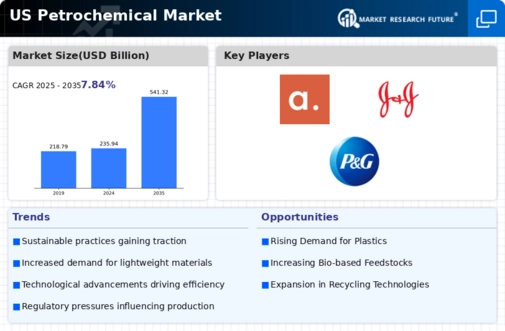US Petrochemical Market Summary
The US Petrochemical market is projected to experience substantial growth, reaching 541.32 USD Billion by 2035.
Key Market Trends & Highlights
US Petrochemical Key Trends and Highlights
- The market valuation is expected to grow from 235.94 USD Billion in 2024 to 541.32 USD Billion by 2035.
- The compound annual growth rate (CAGR) is anticipated to be 7.84 percent from 2025 to 2035.
- This growth trajectory indicates a robust demand for petrochemical products in various industries across the United States.
- Growing adoption of sustainable practices due to environmental regulations is a major market driver.
Market Size & Forecast
| 2024 Market Size | 235.94 (USD Billion) |
| 2035 Market Size | 541.32 (USD Billion) |
| CAGR (2025 - 2035) | 7.84% |
Major Players
Apple Inc (US), Microsoft Corp (US), Amazon.com Inc (US), Alphabet Inc (US), Berkshire Hathaway Inc (US), Meta Platforms Inc (US), Tesla Inc (US), Johnson & Johnson (US), Visa Inc (US), Procter & Gamble Co (US)














Leave a Comment